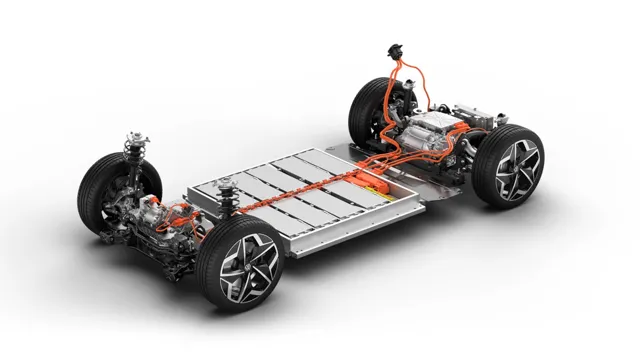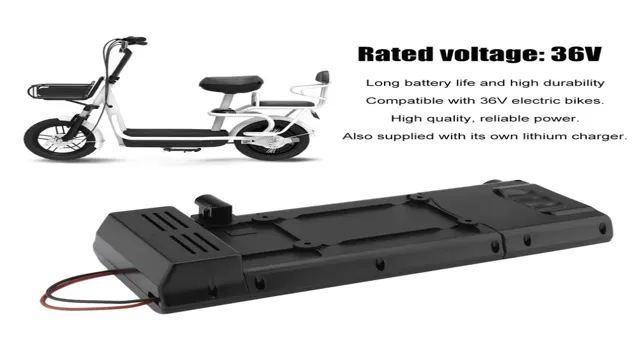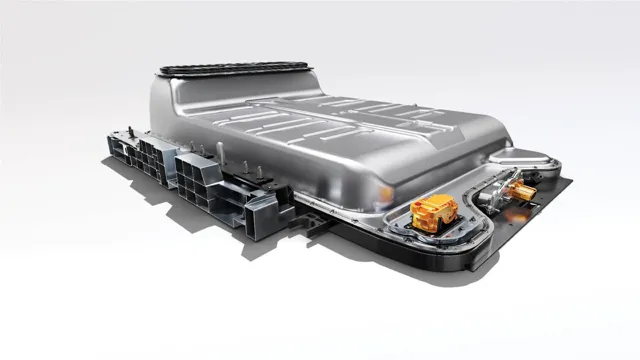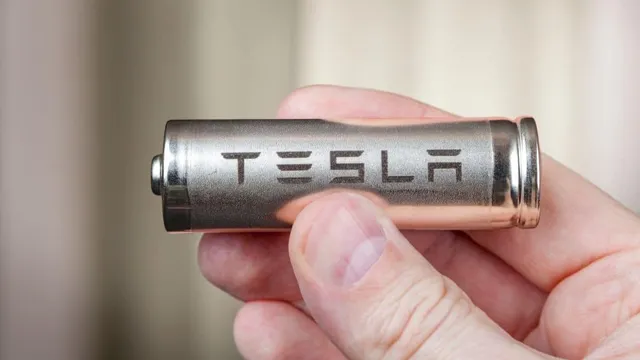Unearthing the Power: The Fascinating World of Digging for Electric Car Batteries
Imagine a future where vehicles run on sustainable and clean energy, eliminating the harmful effects of gasoline-powered engines. This future is becoming closer every day as the world seeks to transition to electric cars, powered by rechargeable batteries. But where do these batteries come from? The answer lies in digging for metals like cobalt, lithium, and nickel, which are crucial components of electric car batteries.
With the growing demand for electric cars, the need to mine these metals sustainably and responsibly has become more apparent. Digging for electric car batteries presents a unique opportunity for a sustainable future. This is because the extraction and processing of these metals have a significant impact on the environment, with carbon emissions and pollution being major concerns.
The development of technology that reduces the environmental impact of mining and processing these metals while still meeting the growing demand for electric cars is necessary. The good news is that some companies are already making significant strides in sustainability within the battery supply chain. For instance, Tesla aims to produce their own sustainable, high-performance batteries in-house, significantly reducing their dependence on external battery supplies.
This initiative promotes not only sustainable battery production but also creates a circular economy where batteries are recycled and reused. The bottom line is that mining for electric car batteries should prioritize sustainable and responsible methods to ensure a cleaner future. While advancements in technology are already being made, it is essential to continue finding ways to produce batteries without causing harm to the environment and the communities that rely on it.
As we work towards a sustainable future, the future of electric cars looks bright.
Why Electric Car Batteries Matter
When discussing electric cars, one component that cannot be overlooked is the battery. These batteries are what power the vehicle and enable it to travel for extended distances without needing to be recharged. However, have you ever thought about where these batteries come from? Many of the materials required to manufacture these batteries are found in remote locations, requiring significant digging and mining efforts.
The environmental impact of this process cannot be ignored, as the mining industry is known for causing habitat destruction and pollution. Therefore, as the popularity of electric cars increases, it is essential to consider the sourcing and production of their batteries to ensure that we are not harming the environment in the process.
Reducing Emissions
Electric car batteries are becoming increasingly vital as we strive to reduce emissions and shift toward renewable energy sources. The batteries used in electric vehicles are essentially the hearts of these cars. They store the energy and power needed for the vehicle to run, providing the electric motor with the necessary charge to move forward.
The more advanced and efficient the battery is, the better an electric car can perform, and the further it can travel on a single charge. In addition, with the development of newer, more robust and economical batteries, the overall cost of electric cars has come down, making them a more affordable and attractive option to many people. As we seek to reduce our dependency on fossil fuels, electric cars and their batteries are increasingly referred to as the future of personal transportation, making it essential to continue investing in the research and development of these technologies.
By doing so, we can reduce our carbon footprints and move towards a clean energy future.

Lowering Costs
Lowering Costs – Why Electric Car Batteries Matter When it comes to electric cars, one of the main factors influencing their pricing is the cost of the battery. If the manufacturers can bring down the cost of batteries, they can make electric cars more affordable and accessible to a wider range of consumers. In essence, the battery is what powers an electric vehicle, making it the most important component and a significant contributor to the overall cost.
But why do electric car batteries matter so much? Firstly, batteries are complex pieces of technology that require a lot of research and development. Each battery chemistry has its own set of advantages and drawbacks, which can impact the range, charging time, and overall lifespan of the battery. The more the manufacturers experiment with different types of batteries, the more they can optimize their costs and production processes.
Secondly, the production of batteries requires a significant amount of resources and energy, which can be expensive. Reducing the amount of materials required in batteries, such as rare earth metals, while still maintaining a high level of performance, can lower costs and environmental impacts. Further, the more batteries can be recycled or repurposed, the less waste they create, making them a more sustainable solution in the long run.
Finally, the demand for batteries is increasing as more consumers switch to electric cars. Meeting this demand while keeping costs low requires innovation and scaling up of production processes. As battery manufacturers compete for market share, they have a greater incentive to lower their costs and offer more affordable solutions to customers.
Overall, the cost of batteries plays a significant role in the affordability and adoption of electric cars. As manufacturers continue to innovate and optimize their battery technology, they can make electric cars more accessible to a wider range of consumers, contributing to a more sustainable and environmentally friendly future.
What Makes Up an Electric Car Battery
Digging for electric car batteries might not be as simple as it sounds. These batteries are made up of several components, including the cathode, anode, electrolyte, and separator. The cathode is composed of a metal oxide material, such as lithium cobalt oxide, while the anode is usually made of a graphite material.
The electrolyte acts as a conductor, allowing ions to flow between the cathode and anode, while the separator keeps the two electrodes separate while still allowing the ions to pass through. These components work together to create the power source that drivers depend on to keep their electric cars running. However, finding the right balance of materials and design can be challenging, as each component affects the battery’s performance and lifespan.
As electric car technology continues to evolve, researchers are constantly experimenting with new materials and designs to create safer, more efficient batteries that can power these vehicles for longer periods between charges.
Lithium-Ion vs. Hydrogen Fuel Cells
When it comes to electric cars, one of the most crucial components is the battery. While there are different types of batteries available, the two most commonly used ones are lithium-ion and hydrogen fuel cells. Lithium-ion batteries are lightweight and compact, making them easier to handle and integrate.
They are also cheaper to manufacture and have higher energy density, allowing them to store more energy in a smaller space. On the other hand, hydrogen fuel cells use hydrogen gas to produce electricity, emitting only water vapor as a byproduct. They have a longer driving range and can refuel faster than electric cars powered by lithium-ion batteries.
However, they are relatively expensive and require a specialized infrastructure for refueling. So, which one is better? Well, it depends on the driver’s needs and preferences. If efficiency, cost-effectiveness, and ease of use are a priority, then lithium-ion batteries are the way to go.
But if you’re looking for a greener alternative that has a longer driving range, hydrogen fuel cells are worth considering.
Cobalt and Nickel Extraction
Electric cars are becoming increasingly popular due to their environmental benefits and cost-effectiveness. However, have you ever wondered what makes up an electric car battery? Two essential components of an electric car battery are cobalt and nickel. Cobalt is used in the battery’s cathode, while nickel is used in both the cathode and anode.
Cobalt and nickel play a significant role in extending the battery’s life and improving its performance. However, the extraction of these minerals raises concerns about ethical and environmental issues. The demand for cobalt and nickel has led to abuse of labor and child/mining slave labor in certain areas.
Moreover, the extraction process of these minerals generates significant waste, including toxic substances such as sulfuric acid. As we transition to renewable energy, it is vital to consider the ethical issues surrounding the extraction of cobalt and nickel and find more sustainable alternatives.
Recycling Efforts
Recycling Efforts When it comes to electric cars, one of the most crucial components is the battery. But what exactly makes up an electric car battery? Typically, these batteries are made up of lithium-ion, which is known for its high energy density. However, in addition to lithium, there are other materials that make up an electric car battery, including cobalt, nickel, and manganese.
While these materials are necessary for the battery to function, they are also valuable resources that can be recycled. Recycling these batteries not only conserves these precious resources but also reduces the negative impact on the environment. In fact, recycling just one ton of lithium batteries can save millions of gallons of water and reduce the production of greenhouse gases.
It is important to continue our efforts in recycling electric car batteries to ensure a sustainable future.
The Mining Process
Digging for electric car batteries involves a complex and multi-step mining process that is crucial for the production of these revolutionary vehicles. The process begins with exploratory drilling to locate areas with high concentrations of minerals such as lithium, cobalt, and nickel, which are essential components of electric car batteries. Heavy machinery is then used to extract the minerals from the earth and transport them to processing facilities where they are refined and turned into battery-grade materials.
However, the mining process is not without its challenges, as mining in remote and ecologically sensitive areas can have significant environmental impacts, and ensuring ethical labor practices and the rights of local communities in mining areas is also crucial. Despite these challenges, the global demand for electric car batteries continues to grow, and advancements in mining technology and sustainable practices are helping to mitigate the environmental and social impacts of the mining process.
Challenges and Concerns
When it comes to mining cryptocurrency, the process can present a number of challenges and concerns. First and foremost, the equipment required for mining can be expensive, especially for beginners. Not only that, but these devices consume a lot of electricity, which can add significant costs to the mining operation.
Another challenge is the fluctuating nature of cryptocurrency prices, which can greatly impact profitability. Additionally, the mining process can be time-consuming and require a lot of technical know-how, which may discourage those who are not tech-savvy. Despite these challenges, many people continue to mine cryptocurrency due to the potential payouts.
However, it is important to carefully evaluate the costs and risks involved in mining before diving in.
Sustainable Practices
When it comes to sustainability in the mining industry, it’s essential to understand the entire mining process. From exploration to site closure, every stage involves a unique set of challenges and opportunities for environmentally responsible practices. Exploration requires careful planning and research to minimize disturbance to natural landscapes and wildlife habitats.
Once an ore deposit is found, companies must work to extract it while minimizing damage to the surrounding environment, often using techniques like leaching and smelting to extract metals without producing excess pollutants. One of the most significant challenges in the mining process is managing waste. To reduce the impact on the environment, companies must establish proper waste management policies, including recycling and responsible disposal of hazardous materials.
Finally, after the deposit is depleted, the site must be reclaimed, returning it as closely as possible to its original natural state. Overall, mining can be done sustainably, but it requires dedication to best practices and a long-term view of the environmental impact.
The Future of Electric Car Batteries
When it comes to digging for electric car batteries, there’s no doubt that technology has advanced rapidly in recent years. From lithium-ion to solid-state batteries, there are a variety of new battery technologies that could be game-changers for the electric car industry. One of the biggest drivers of innovation in this space is the need for longer battery life and faster charging times.
As consumers demand more from their electric vehicles, there is intense competition among manufacturers to develop better, more efficient batteries. Additionally, governments around the world are pushing for cleaner transportation options, which is driving demand for electric cars and putting pressure on manufacturers to come up with new battery technologies that can meet these demands. While there are still many challenges to be overcome, such as cost and scalability, the future of electric car batteries looks very promising.
As technology continues to improve, we may soon see electric cars with ranges that rival those of gasoline-powered vehicles and charging times that are a fraction of what they are today.
Conclusion
In conclusion, we’ve learned that digging for electric car batteries is a bit like mining for gold – it takes some hard work and creativity to unearth these precious resources. But unlike the elusive and finite nature of gold, the batteries for electric cars represent a sustainable and ever-growing solution to our transportation needs. So while we may need to dig a little deeper to find them, the rewards of driving cleaner, more efficient vehicles are worth the effort.
In short, when life gives you dirt, dig for electric car batteries!”
FAQs
What resources are used to make electric car batteries?
Electric car batteries are made using a combination of metals such as lithium, cobalt, nickel and manganese that are mined from the earth.
Is the process of mining for battery metals harmful to the environment?
Yes, mining for battery metals can be harmful to the environment as it can result in soil depletion, water contamination and land degradation.
What are some sustainable alternatives for mining battery metals?
Recycling used electric car batteries is a sustainable alternative to mining for battery metals. Additionally, researchers are exploring the use of alternative materials such as magnesium and calcium.
How long do electric car batteries typically last?
The lifespan of an electric car battery can vary based on several factors such as usage and environmental conditions, but most electric car batteries typically last between 8-10 years.






